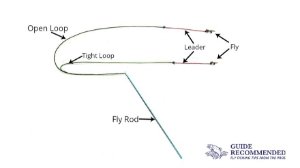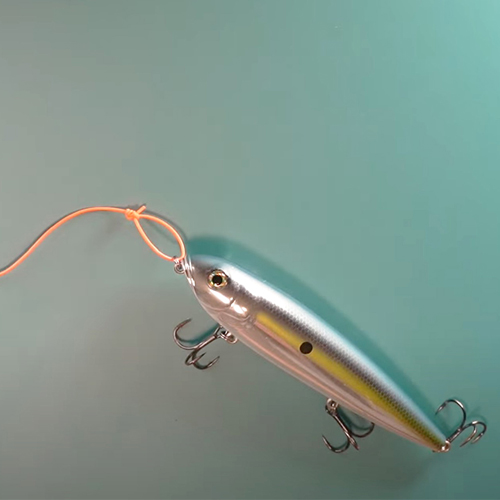Tight Loop & Open Loop
Learn more about the tight loop and open loop casting styles used in fly fishing. Learn the difference between two loops, when to use them, advantages and disadvantages and more information.
Tight Loop And Open Loop Fly Casting
Learn more about tight loop and the open loop fly casting styles. Learn the difference between these two loops, when to use them, the advantages and disadvantages while fly fishing.
Open Loop Fly Casting
Sometimes called "no loop." The lines (legs) are widely separated. This is produced by waving the rod so that the tip moves in an exaggerated convex path.
This type of loop takes a lot of energy to cast. It is not recommended to practice open loop fly casting in windy situations; it may end up in a disaster. This technique is best used for casting heavy flies or weighted rigs for nymphing to give the leader more time to unfurl with the added weight. Controlling the shape is vital to take advantage of this technique’s benefits when the situation calls for it.
Tight Loop Fly Casting
Sometimes called narrow loop. The lines (legs) are close together and parallel, produced by an almost straight line path of the rod tip.
Tight loops require less energy to control. A tight loop is extremely efficient in wind and enables you to present your fly with pin-point accuracy. The energy used in this loop is mostly one-directional and produces high line speed. Tight loops can be quite fun to cast.

Image courtesy of Guide Recommended.
Fly Casting Lines
Whether tight loop or open loop fly casting, successfully creating fly line loops relies on a smooth transfer of energy. Your fly line knots are part of this transfer, including the fly line loop to leader connection. Be mindful that your connection is secure enough to stay put without interfering with the casting motion.
KEEP LEARNING

How to Tie the Non-Slip Loop Knot
The non-slip loop knot is a popular and reliable choice for securing hooks, lures, and other tackle to your fishing line.
LEARN MORE

Socials
Take me fishing social media links
LEARN MORE

TakeMeFishing x Teen Vogue
Join us on a creative journey as fashion designer Ahmrii Johnson walks us through her collaborative vision and process with Teen Vogue and fashion brand, Rentrayage, to create a special piece.
LEARN MORE


.png?lang=en-US&ext=.png)